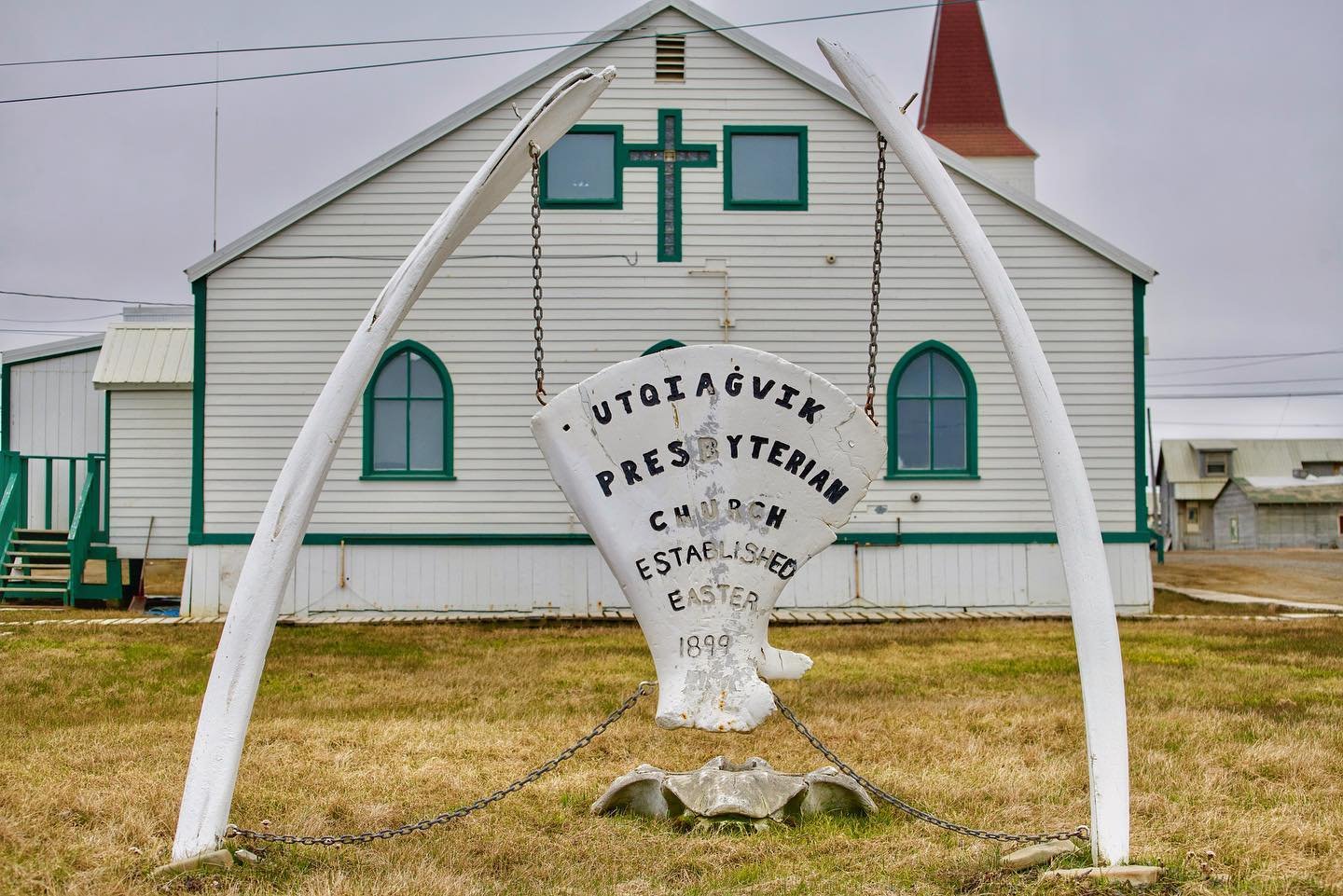6 Things to Do in Utqiaġvik (Barrow)
Utqiaġvik sits alongside the Arctic Ocean and is the northernmost community in the United States.
Formerly known as Barrow, the official name of the village changed to Utqiaġvik in 2016 when village residents voted to change the name back to its traditional Iñupiaq name. It's the largest Iñupiaq settlement in Alaska. If you are visiting May–August, you’ll witness 24-hour daylight, so black-out curtains are a must! Check out these six reasons why this slightly-hard-to-reach area is a destination that shouldn’t be missed.
1. Experience 24 Hours of Daylight
Watch the sun circle low over the horizon without ever setting. Between May 10 and the sunset on August 2, visitors can soak up vitamin D all night long. Due to the earth’s tilt, the Northern Hemisphere faces the sun all summer long, accounting for the extra daylight hours. It’s no surprise that Alaska is known as the Land of the Midnight Sun. Oftentimes, people completely lose track of time, and it can quickly become 11 p.m. or later before visitors realize they haven’t even begun to feel tired!

2. Dip Your Toe in the Arctic Ocean
Talk about something for the bucket list: walking the beaches of the Arctic Ocean and even dipping a toe in the chilly waters is a unique experience that not many people have the chance to encounter.
In Utqiaġvik, visitors will already find themselves very near to the Arctic beach. After strolling the beach and admiring the views, work up the courage to dip hands or feet into the ocean waters that, even in the summer, can linger around 30–36 degrees Fahrenheit.

3. Visit the Northernmost, And One of the Oldest, Cities in the U.S.
Utqiaġvik is also one of the oldest-inhabited town sites. At the Birnirk National Historic Landmark archaeological site just a few miles from town, evidence of human habitation goes back as far as 1,000 to 1,500 years ago. The Birnirk culture existed from about 500 to 900 A.D.
Evidence of the culture can be seen at this site in the form of 16 dwelling mounds. The mounds reach up to 14 feet tall and were formed by the construction of new houses on top of the ruins of other structures over hundreds of years. Driftwood and whalebones frame the walls of the dwellings. Tools and other artifacts recovered from the site are used to compare artifacts from other sites and learn more about the Iñupiat culture in Alaska and Canada. Similar tools and artifacts have been found from the Russian Far East to northern Canada. The Birnirk site is a key link between prehistoric cultures and their modern descendants.

4. Soak Up the History
Being one of the oldest-inhabited places in the States, there is no shortage of history. To get the full tour, visit the area’s places listed on the National Register of Historic Places. Start at The Cape Smythe Whaling and Trading Station in the central section of town, known as Browerville. Built in 1893 as a whaling station, the structure at the site is the oldest frame building in the Arctic.
For a little more recent history, head just west of the Alaska Airlines airport terminal to Ahkovak and Momegana Streets to see the Will Rogers and Wiley Post Monument. The pair died in a plane accident 15 miles southwest of Utqiaġvik while flying to Siberia. The six-sided monument honors pioneer Wiley Post and the actor and humorist Will Rogers.
5. Commemorate Your Trip with A Picture
Known as the “Gateway to the Arctic,” the whalebone arch connects the area to its traditional whaling history. Since the early days of human habitation in the area, the people who have called Utqiaġvik home have relied upon whales for almost everything they needed. The meat is still used for food, skin and bones for boats and clothing, baleen for tools and art, and whale blubber is used for oil.
The arch, which is located on the beach near The Cape Smythe Whaling and Trading Station, is constructed out of a bowhead whale’s jawbone and is surrounded by shells of traditional whaling boats. The arch not only provides perspective on the massive size of the animals but also provides the perfect backdrop for a photo to commemorate a trip.

6. Spot Unique Wildlife
When spring arrives, Utqiaġvik comes to life with millions of migratory birds and thousands of bowhead and beluga whales. Throughout the spring and summer, ringed and bearded seals, walrus, and more swim in the ocean waters, and foxes and caribou can be seen on land. The road system around town offers some of the best wildlife viewing opportunities. Travelers can set off on their own or take a guided tour of the area to look out for the many animals that call the Arctic home. During some months, it can even be possible to spot polar bears in the area.
Utqiaġvik is also home to many species of birds who travel north for the extra sunlight in the summer to raise their young. The area is one of the few-known nesting spots for Steller’s and spectacled eiders. In the late fall, Ross’ Gulls from Siberia fly overhead, signifying the return of winter. In Inupiaq, Utqiaġvik means “the place where we hunt snowy owls.” Snowy owls come to nest in the area when food is plentiful, so bring binoculars for some incredible birdwatching.

Alaska: AKA Your Next Adventure
Where will your Alaska adventure take you? Order our Official State of Alaska Vacation Planner and plot your course.

